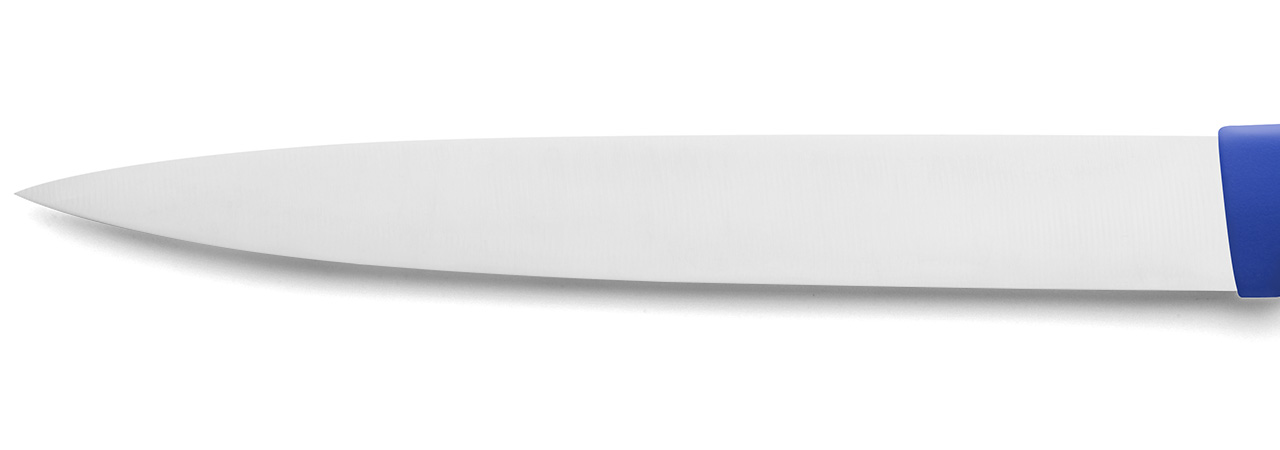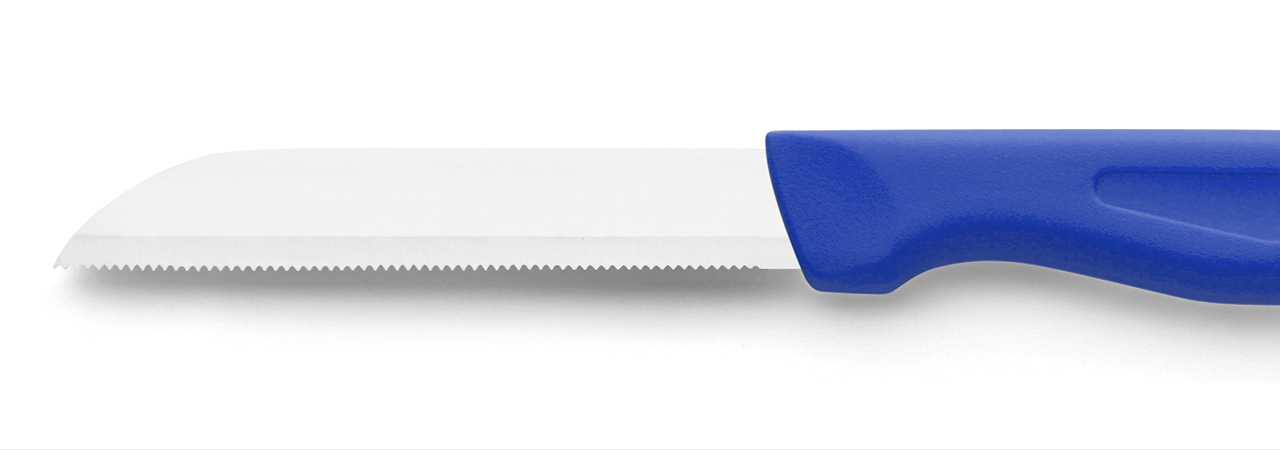BLADE GUIDE
IT'S ALL ABOUT THE BLADE
As kitchen knives are used for various tasks when cleaning, preparing and cooking, different blades with different cutting edge shapes have developed over time. The technical term for the cutting edge is also called the grind.
Different types of "grinds", as the professional would say, are used. By choosing the appropriate blade, food is cut optimally and not torn or crushed - depending on the task at hand.

Blades with a straight edge
This is the most common blade shape. Knives with a straight grind cut with a clean cut. The cutting object is not frayed or torn, but separated smoothly. Also knives used for peeling have a straight grind.
A straight grind is suitable for:
- meat
- fish
- vegetables
- fruit

Blades with a serrated edge
This blade shape has a cutting edge with regular waves. The waves along the grind work their way into the cutting object. This edge, which is very typical for bread knives, ensures that the bread can be sawed. If a hard crust or peel has to be cut, the rounding can be cut through without slipping off the object.
A serrated edge is suitable for:
- Bread / bread rolls / baguette
- Firm fruit, such as pineapples
- Cake (portioning)
- Roast with crust

Blades with a sawtooth edge
This blade shape has so-called saw teeth. The grind has a sawtooth edge. The fine little "teeth" facilitate the cutting and dividing of soft cutting objects with a hard peel and soft structure. The sawteeth scratch the surface of the peel effortlessly and then neatly work their way through the cutting object.
A sawtooth edge is suitable for:
- tomatoes
- kiwis
- vegetables
- dried sausage specialties

